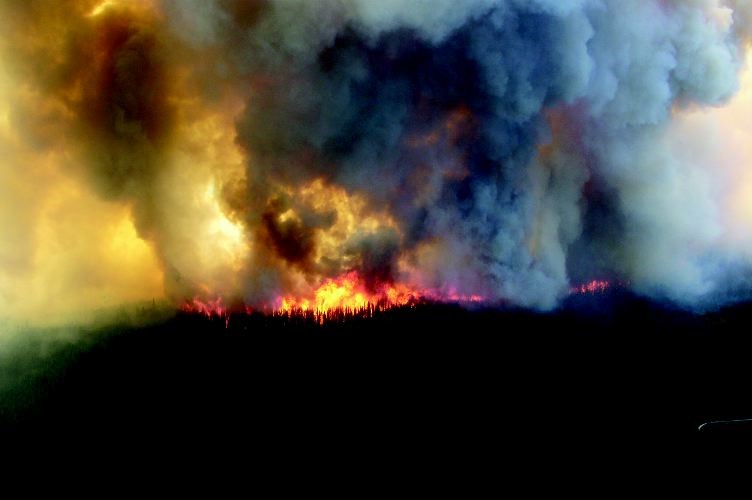Temperature records are falling around the globe. This past week, Prince George has been sitting squarely under an anti-cyclone giving us our high temperatures and blue skies while trapping particulate matter in the air above the city. But Prince George is not an exception. Hot weather can be seen around the world.
On June 26, Quriyat in Oman recorded the highest minimum daily temperature observed in almost 200 years of reliable recorded measurements. The nighttime low was 42.6 C with a daytime high of 49.8 C. For 24 hours, the temperature was somewhere in the mid-to-upper 40s.
These temperatures are well above typical body temperature for human beings. Under these conditions, we can't dissipate our internal heat so we effectively run a fever unless we can find a cooler place. The resulting heat stroke or dehydration from high temperature can be life threatening.
Heat-related deaths are on the rise. In Quebec, an early July heat wave was blamed for up to 70 deaths. The blistering heat hit 40 on the humidex and seriously affected members of vulnerable communities, such as the elderly who live alone. The government went so far as to ask first responders to knock on doors and check up on residents.
In Greece, soaring temperatures and high winds fueled the flames of a recent fire resulting in at least 74 deaths. While the cause of the fires is thought to be arson, the combination of high temperature and dry conditions allowed the wind to push the fire swiftly through coastal towns. Hundreds of evacuees fled to the beaches and even into the sea to avoid the fire storm.
In California, temperatures in the Carr fire are so hot, they are creating an updraft of air sufficient to generate mushroom or pyrocumulus clouds. High temperatures, low humidity and winds are feeding the fire. Indeed, with almost 100,000 acres burning, the fire has become its own weather system and the rising air mass fuels the winds feeding the fire. A number of people have died as a result of the firestorms affecting the state and many more are missing.
High temperatures are fueling other fires in California and in other countries. Sweden is suffering one of its worse forest fire seasons in years. Australia is seeing bush fires running out of control. And fires in Siberia are being blamed for our perpetual hazy skies.
Is all of this a consequence of climate change? It is very tempting to say "yes" but high temperatures, low humidity and strong winds are a consequence of weather. They are day-to-day phenomena associated with any given location on Earth.
For example, Prince George usually has reasonably warm summers with a moderate amount of rain so our present temperatures might seem a bit warm. But they are not record breaking. They just represent the upper end of the normalized distribution curve. That is, they are just one end of the bell curve we see for temperatures in Prince George.
On the other hand, globally, 2018 is likely to be one of the warmest years on record. We have seen persistently hotter and drier conditions since the late 1990s, not just in Prince George but around the world. California has been in an extended drought. The Sahara dessert is expanding. Southeast Asia sees hundreds die every year as a consequence of heat. And extreme weather seems to be the norm.
Consider last year's devastating hurricane season which destroyed Puerto Rico and damaged the Gulf Coast, fueled by warmer oceans and rising temperatures. In 2016, China experienced the deadliest tornado it had experienced in 40 years. Typhoons have flooded areas of India and Southeast Asia.
The weather around the world is changing. And over time, climates will change as well. Dry climates will become wet. Wet climates will dry out. Cold climates will become warm and warm climates will become hot.
Even though we shouldn't blame the weather of 2018 on climate change, what we are experiencing is a harbinger of things to come. Increasingly long-term patterns of weather will shift, resulting in changes to mean surface temperatures, precipitation and other factors. Slowly the effects of long term change will take hold.
There are many people who hold the belief climate change is not a result of increasing levels of carbon dioxide in the atmosphere and human activity. If this is the case, we are at the mercy of the elements and are doomed.
But for the majority of us, it is past time to act and reduce the emission of greenhouse gases. The resulting societal costs associated with mass starvation, climate refugees and extinction of animal and plant species will dwarf the costs of doing what we can right now.
We need to act before more temperature records fall.



